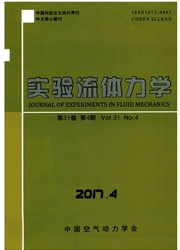

 中文摘要:
中文摘要:
介绍了燃烧诊断学中常用的非接触光谱诊断和取样诊断方法。光谱方法包含红外吸收光谱、紫外激光诱导荧光和非线性光谱方法(如相干反斯托克斯拉曼光谱等),可以测量燃烧体系的温度场、浓度场和速度场信息,可用于研究燃烧基元反应动力学,燃料的热解和氧化,层流火焰结构及湍流火焰的成像。而通过分子束取样的真空紫外光电离质谱检测方法可以获得更全面更灵敏的诊断信息,特别是活泼的燃烧中间体的浓度信息,为详细燃烧反应动力学模型的发展和验证提供了强有力的支持。
 英文摘要:
英文摘要:
Combustion diagnostics methods include non-intrusive spectroscopic technique and sampling methods. We briefly reviewed spectroscopic measurement techniques such as infrared absorption spectroscopy, planar laser induced fluorescence spectroscopy, and nonlinear spectroscopy methods, which are used to study elementary combustion reaction kinetics, pyrolysis and oxidation of fuels, structure of laminar flames and turbulent flames by probing the temperature, species concentration and speed of these combustion systems. Highly sensitive synchrotron-based VUV photoionization mass spectrometry is capable of measuring reaction intermediates such as short lived radicals that are imperceptible to other diagnostic techniques, which is of crucial importance to the development and validation of detailed kinetic models of combustion reaction dynamics.
 同期刊论文项目
同期刊论文项目
 同项目期刊论文
同项目期刊论文
 Experimental and kinetic modeling study of laminar coflow diffusion methane flames doped with 2-buta
Experimental and kinetic modeling study of laminar coflow diffusion methane flames doped with 2-buta Experimental and kinetic modeling investigation on decalin pyrolysis at low to atmospheric pressures
Experimental and kinetic modeling investigation on decalin pyrolysis at low to atmospheric pressures Experimental and kinetic modeling investigation on laminar premixed benzene flames with various equi
Experimental and kinetic modeling investigation on laminar premixed benzene flames with various equi Experimental and kinetic modeling study of the low- and intermediate-temperature oxidation of dimeth
Experimental and kinetic modeling study of the low- and intermediate-temperature oxidation of dimeth 期刊信息
期刊信息
